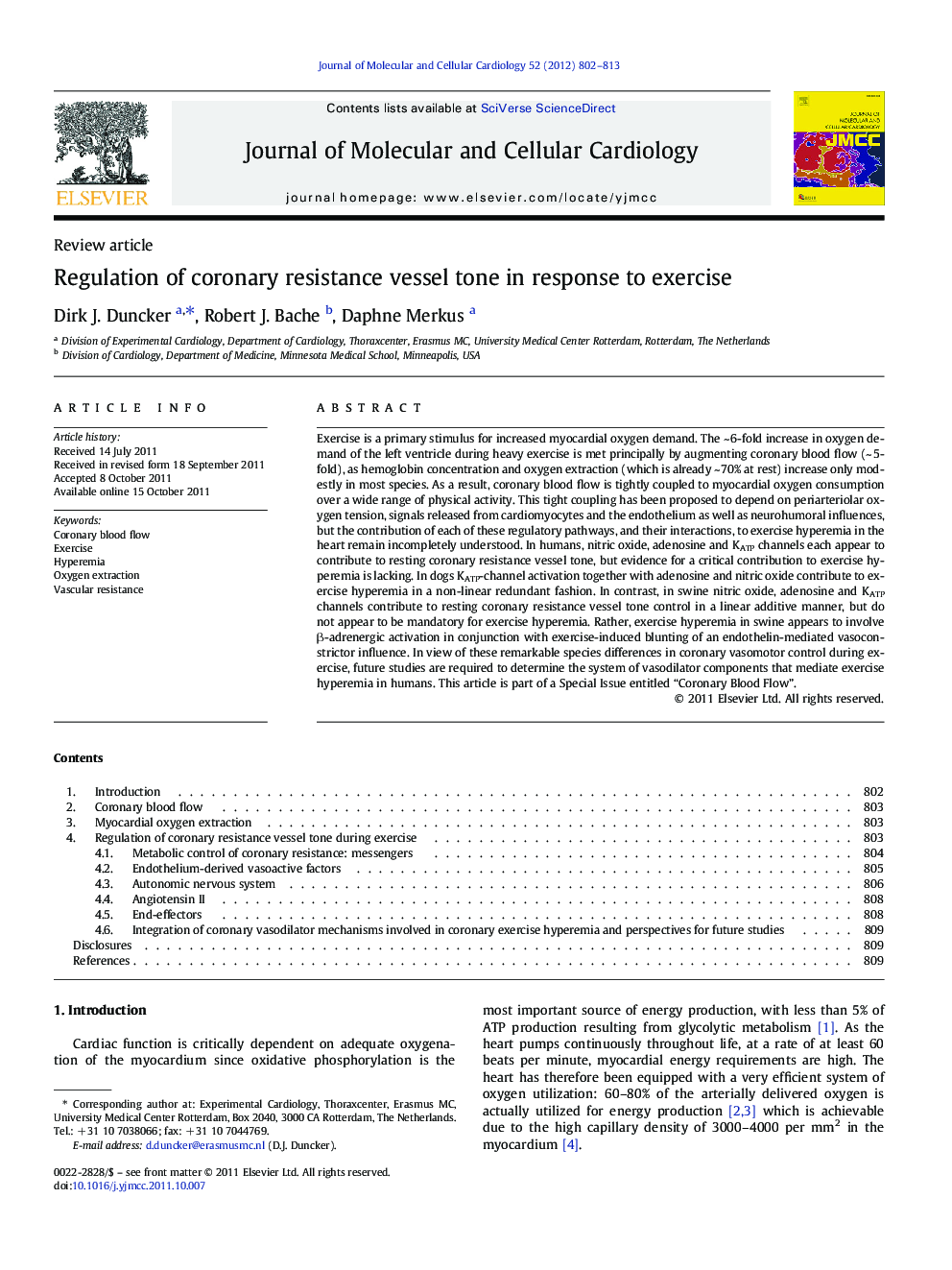| کد مقاله | کد نشریه | سال انتشار | مقاله انگلیسی | نسخه تمام متن |
|---|---|---|---|---|
| 2190652 | 1097807 | 2012 | 12 صفحه PDF | دانلود رایگان |

Exercise is a primary stimulus for increased myocardial oxygen demand. The ~ 6-fold increase in oxygen demand of the left ventricle during heavy exercise is met principally by augmenting coronary blood flow (~ 5-fold), as hemoglobin concentration and oxygen extraction (which is already ~ 70% at rest) increase only modestly in most species. As a result, coronary blood flow is tightly coupled to myocardial oxygen consumption over a wide range of physical activity. This tight coupling has been proposed to depend on periarteriolar oxygen tension, signals released from cardiomyocytes and the endothelium as well as neurohumoral influences, but the contribution of each of these regulatory pathways, and their interactions, to exercise hyperemia in the heart remain incompletely understood. In humans, nitric oxide, adenosine and KATP channels each appear to contribute to resting coronary resistance vessel tone, but evidence for a critical contribution to exercise hyperemia is lacking. In dogs KATP-channel activation together with adenosine and nitric oxide contribute to exercise hyperemia in a non-linear redundant fashion. In contrast, in swine nitric oxide, adenosine and KATP channels contribute to resting coronary resistance vessel tone control in a linear additive manner, but do not appear to be mandatory for exercise hyperemia. Rather, exercise hyperemia in swine appears to involve β-adrenergic activation in conjunction with exercise-induced blunting of an endothelin-mediated vasoconstrictor influence. In view of these remarkable species differences in coronary vasomotor control during exercise, future studies are required to determine the system of vasodilator components that mediate exercise hyperemia in humans. This article is part of a Special Issue entitled “Coronary Blood Flow”.
► Mechanisms of exercise hyperemia in the heart remain incompletely understood.
► Mechanisms of exercise hyperemia appear highly species dependent.
► Hyperemia in dogs involves adenosine, nitric oxide, and KATP channel activation.
► Hyperemia in swine involves β-adrenergic activation and loss of endothelin influence.
► The mechanisms of exercise hyperemia in the human heart await further elucidation.
Journal: Journal of Molecular and Cellular Cardiology - Volume 52, Issue 4, April 2012, Pages 802–813